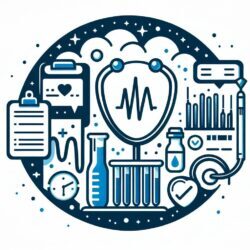## Other Musculoskeletal Disorders: A Guide to Understanding and Managing Body Pain
### Introduction
Other musculoskeletal disorders encompass a wide range of conditions that affect the body’s musculoskeletal system, which includes bones, joints, muscles, tendons, ligaments, and cartilage. These disorders can cause a variety of symptoms, including pain, swelling, stiffness, limited range of motion, and muscle weakness.
### Symptoms
The most common symptom of other musculoskeletal disorders is **pain**, which can be sharp, dull, aching, or throbbing. Other symptoms may include:
– **Swelling:** caused by inflammation or fluid buildup
– **Stiffness:** difficulty moving a joint or muscle
– **Limited range of motion:** inability to move a joint through its full range
– **Creaking or popping sounds:** heard during joint movement
– **Muscle weakness:** reduced strength in a muscle or group of muscles
– **Joint instability:** feeling that a joint is loose or unstable
### Diagnosis
Diagnosing other musculoskeletal disorders typically involves a physical examination and a review of symptoms. Your doctor may also order tests such as:
– **X-rays:** to visualize bones and joints
– **MRI scans:** to create detailed images of the inside of a joint
– **Blood tests:** to check for inflammation or other abnormalities
### Prevention
Preventing other musculoskeletal disorders is not always possible, but there are some steps you can take to reduce your risk:
– **Maintain a healthy weight:** Excess weight can put strain on joints.
– **Exercise regularly:** Exercise strengthens muscles and bones and helps maintain flexibility.
– **Use proper body mechanics:** Pay attention to your posture and avoid awkward or repetitive movements.
– **Warm up before exercising:** Warm muscles are less likely to be injured.
– **Stretch regularly:** Stretching helps keep muscles flexible and prevents stiffness.
### Treatment
Treatment for other musculoskeletal disorders depends on the underlying condition. Common treatment options include:
– **Pain relievers:** Over-the-counter or prescription medications can help reduce pain.
– **Anti-inflammatory medications:** These medications reduce inflammation, which can help relieve pain and swelling.
– **Corticosteroids:** Powerful anti-inflammatory medications that can be injected into joints or taken orally.
– **Disease-modifying antirheumatic drugs (DMARDs):** Long-term medications used to treat autoimmune conditions like rheumatoid arthritis.
– **Biologic therapies:** Injected medications that target specific parts of the immune system.
– **Lifestyle modifications:** Such as losing weight, exercising, and quitting smoking, can help improve symptoms.
– **Physical therapy:** Exercises and treatments to strengthen muscles, improve range of motion, and reduce pain.
– **Joint replacement:** Surgery to replace a damaged joint with an artificial one.
– **Surgery:** To repair or correct a musculoskeletal problem.
### Complications
If left untreated, other musculoskeletal disorders can lead to complications such as:
– **Disability:** Inability to perform daily activities due to pain or limited mobility.
– **Functional impairment:** Reduced ability to use a body part or perform tasks.
– **Chronic pain:** Pain that persists for more than 3 months.
– **Reduced quality of life:** Pain and disability can significantly affect a person’s overall well-being.
### Rehabilitation
Rehabilitation is an important part of managing other musculoskeletal disorders. Physical therapy, occupational therapy, and other interventions can help restore function, improve mobility, and reduce pain. **Disability accommodations** may also be necessary to help people with musculoskeletal disorders live and work independently.
### Conclusion
Other musculoskeletal disorders are a common source of pain and disability. By understanding the different conditions, symptoms, and treatment options, you can better manage your condition and improve your overall quality of life. If you experience any musculoskeletal pain or discomfort, it is important to see a doctor for proper diagnosis and treatment.


